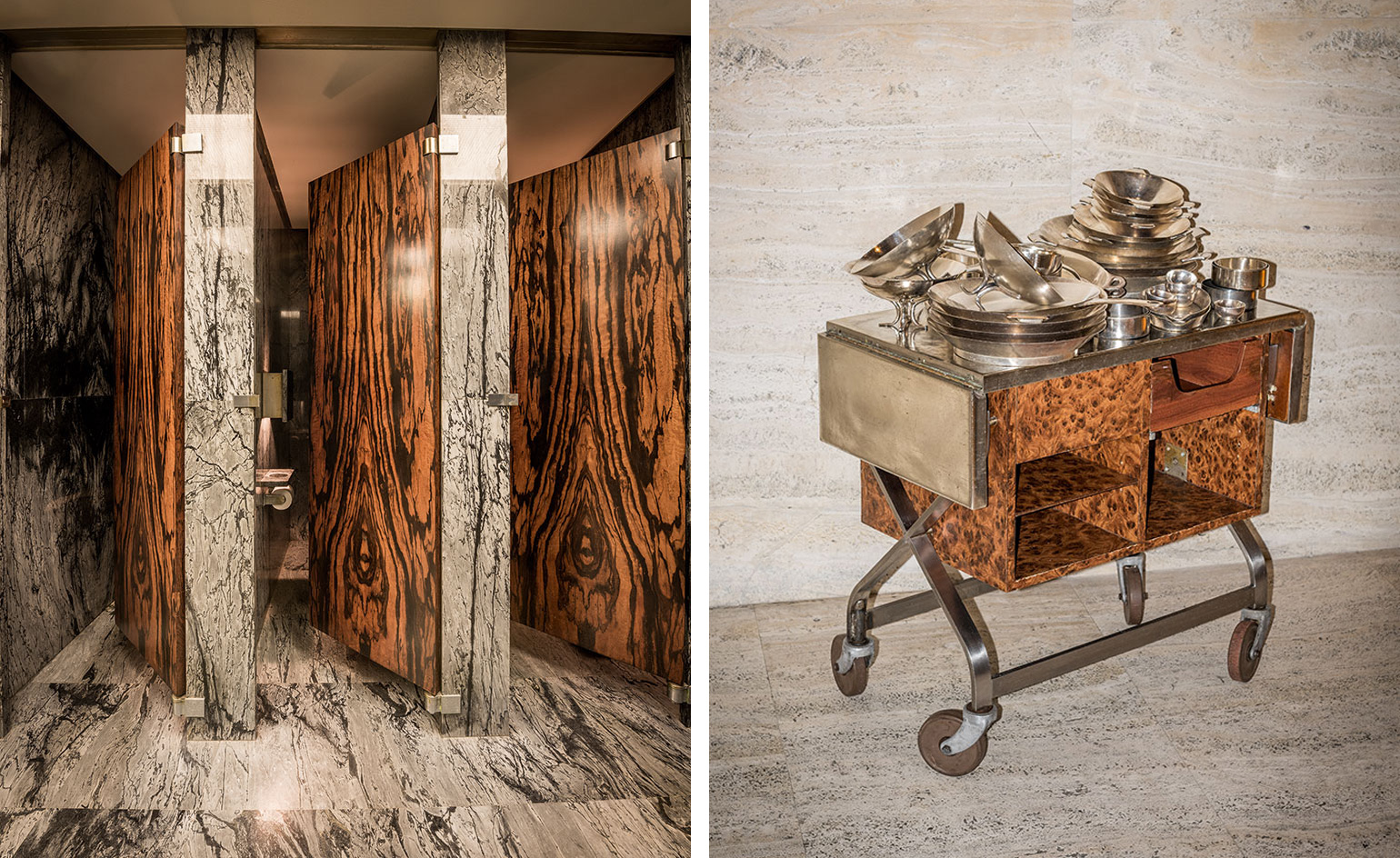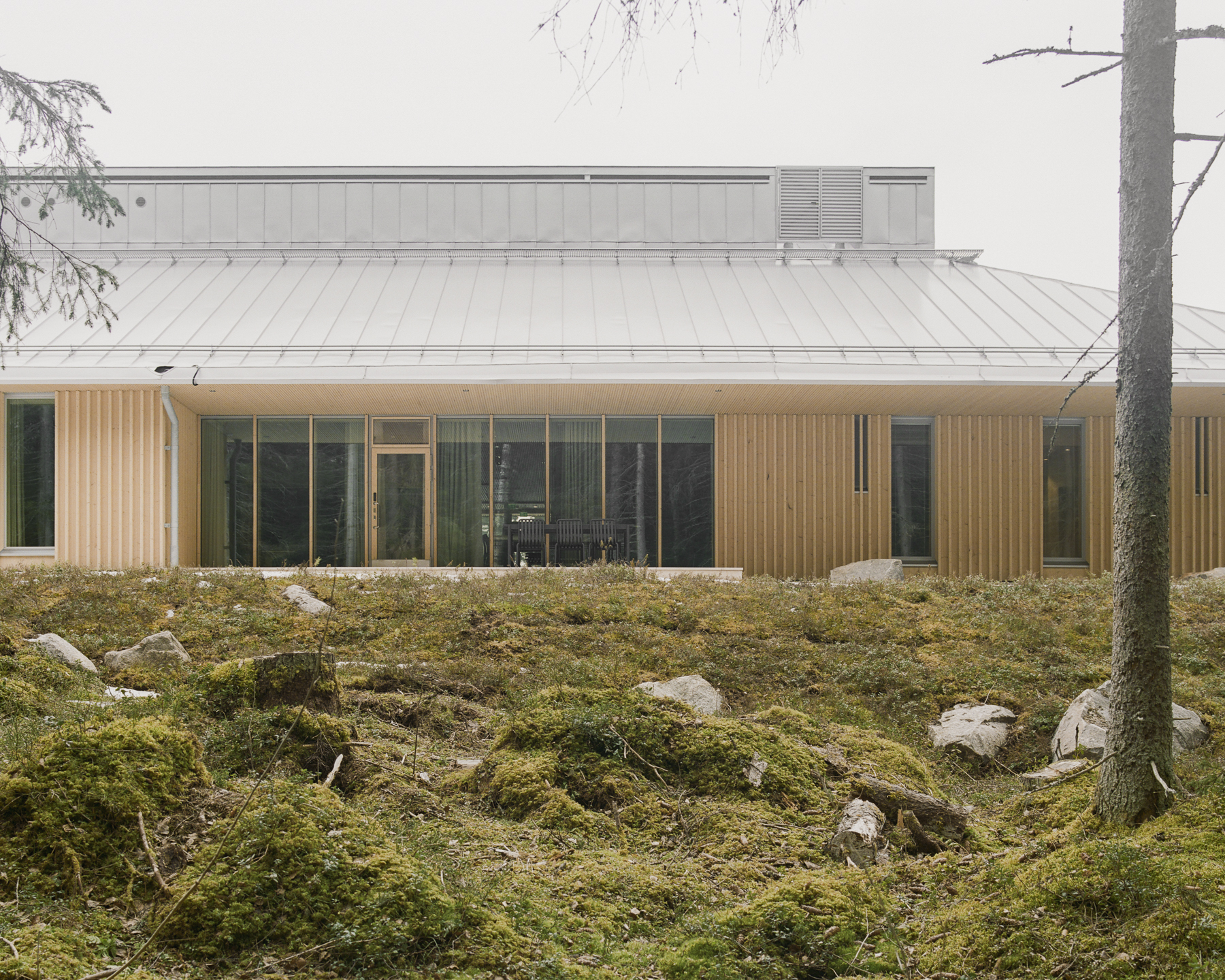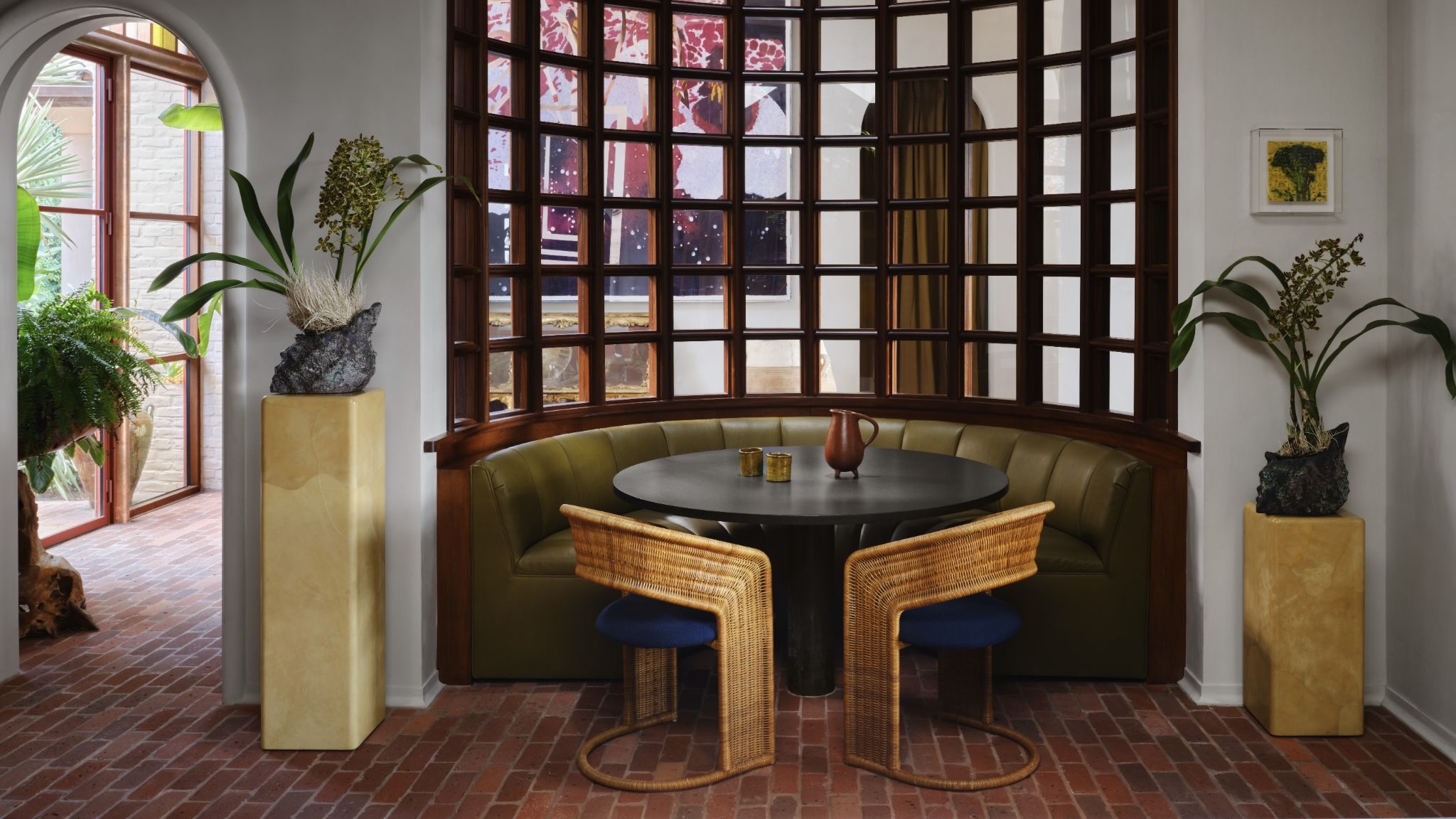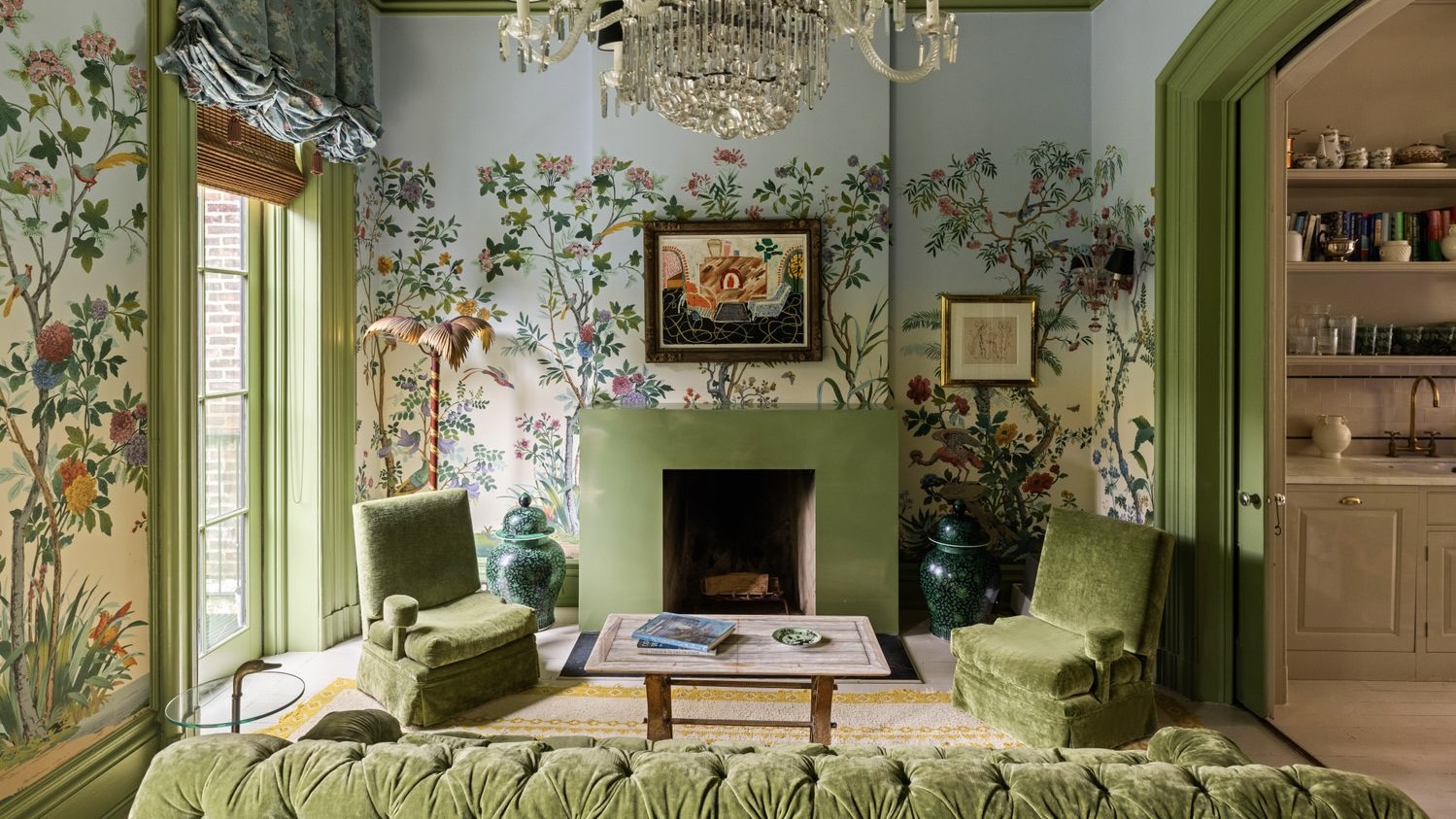Bid farewell: the sale of the mid-century at New York’s Four Seasons Restaurant

It’s just past noon on a late spring day at The Four Seasons Restaurant in New York. Co-owner Julian Niccolini, dressed in polished Oxfords and one of his many custom-made Thom Browne suits, examines the tables allocated for the all-important lunch reservations. Preternaturally calm waitstaff smooth over the crisp linen tablecloths as Alex von Bidder, Niccolini’s long-time business partner, calmly greets a handful of early guests as they ascend the wide travertine staircase. With the power hour unfolding with a kind of military grace, it’s almost impossible to imagine that this bastion of the New York dining scene will close its doors in just a few weeks. 'Some of us remain in a kind of denial,' says Niccolini, who began working at the restaurant in 1977, four years after arriving in the US. 'I’ve basically grown up within these walls, and I’ve seen the restaurant through many different chapters of New York history.'
From its inception, The Four Seasons Restaurant was a restaurant of singular ambition. A pair of vast rooms at the base of Mies van der Rohe’s Manhattan masterpiece, the 38-storey Seagram Building, the restaurant opened in 1959. Like the building itself, the restaurant’s construction was overseen by Seagram owner Samuel Bronfman and his architect daughter Phyllis Lambert, who lavished fastidious attention on every detail, birthing a truly modern Gesamtkunstwerk.
In keeping with the world’s foremost International Style building, the restaurant marries rectilinear clarity with an exquisite material palette. When an exhausted Mies retreated to Chicago, Philip Johnson, who would one day be considered the ‘dean’ of American architecture, was charged with designing the restaurant’s interior.
Faced with the scale of a small European train station, Johnson divided the space into two large dining rooms. In the Grill Room, he added magisterial 20ft-high panels of French walnut and installed a square bar beneath a Richard Lippold sculpture of hanging bronze tubes. For the somewhat more romantic Pool Room, a raised pool of white Carrara marble was installed as a visual anchor. Connecting the two spaces is a long, thin travertine-clad passageway known as Picasso Alley because it housed a 19ft x 20ft Picasso curtain created in 1919.
Johnson and Lambert’s design dream team also included lighting expert Richard Kelly; industrial designers L. Garth and Ada Louise Huxtable; and landscape architect Karl Linn. The project’s final budget amounted to the then-unprecedented sum of $4.5m, said to be more than the cost of the entire Guggenheim Museum.
Here, in the heart of Midtown Manhattan, was a new kind of establishment. Undeniably glamorous, but never gauche or glitzy, the restaurant was a paean to power itself, and the handsome travertine and glass space became the quintessential backdrop for the city’s post-war ambitions and dizzily status-conscious denizens. Heads of state, visiting royalty, newly minted yuppies and titans of industry all parked up to discuss business and seal deals.
Thankfully, the tables were far enough apart to facilitate dealmaking yet still allow for just a soupçon of eavesdropping (to be breathlessly reported by Page Six), while generous sightlines facilitated discreet stargazing. With a setting that never eclipsed its supernova clientele, The Four Seasons Restaurant always seemed to be the social arena of the moment. In 1962, the newly inaugurated President Kennedy celebrated his 45th birthday party in one of the restaurant’s private rooms, hours before Marilyn Monroe’s famous raspy serenade. In the 1980s, it was Chanel power suits, Ivana Trump and naked romps in the marble pool. The 1990s saw it become the de facto Condé Nast canteen (where US Vogue editor Anna Wintour, a regular diner, was once served a dead raccoon by a PETA protester).
'Everybody has eaten here,' says Niccolini, suggesting it’s easier to name the celebrities who have not dined here ('We’ve fed every president except Richard Nixon'). In 1979, Esquire coined the term 'power lunch to describe the restaurant’s sui generis blend of power and status. Jacqueline Kennedy Onassis christened the Grill Room 'the cathedral.'
But it couldn’t last. In recent years, this seat of 20th century might has become the object of much public combat, with von Bidder and Niccolini pitted against Aby Rosen, the Seagram Building’s owner. Rosen has also clashed with preservationists and Lambert, the restaurant’s visionary creator, by pushing for the removal of the Picasso curtain (which was painted for the ballet Le Tricorne and is now installed in the New-York Historical Society) and proposing structural changes to its landmark protected interiors. Unable to reach a new lease agreement, the owners decided to shutter the restaurant and reopen it elsewhere under the same name. Nevertheless, The Four Seasons Restaurant, as we know it, will cease to exist.
While most of the building’s iconic interior elements cannot be altered, its contents are due to be sold in a sale conducted by Chicago-based auction house Wright. 'The Four Seasons is the epitome of Power New York,' says founder Richard Wright. 'Having a drink at the bar, where I always felt obligated to order a martini, felt impossibly urbane. The richness of the interior, the hushed environment and the hypnotic ripple of the metal window treatments refute the idea of modernism being cold and clinical. The space elevates and inspires, which is why it has played a part in the important life moments of so many.'
For those who’ve celebrated a milestone at the restaurant or simply enjoyed a business lunch, its rich furnishings and tableware possess both intrinsic and talismanic power. 'It reminds me of when the Yankees relocated and the stadium’s contents were sold to the fans,’ says Niccolini. 'Our guests are desperate to own a piece of the city’s culinary and social history.'
Among the lots up for auction are the Grill Room’s five custom-built Knoll banquettes, the domain of the restaurant’s A-list habitués. 'Each day, Philip Johnson would take his lunch right here and order a single negroni,' says Niccolini, pointing out the Grill Room’s southernmost banquette. Other pieces for sale include upholstered 'Brno' chairs, originally designed for Mies’ Villa Tugendhat in Brno in the Czech Republic; polished bronze-topped 'Tulip' tables by Eero Saarinen from the bar area; Hans Wegner chairs from the Grill Room’s mezzanine, including the chair that JFK sat on during his birthday dinner; and the sofas that Johnson designed specifically for waiting guests.
'The Bronfman family and Phyllis Lambert, in particular, were like the Medicis of their time,' says Niccolini, listing the sheer number of items that were commissioned for the restaurant by its founders, determined to cast off the tradition-bound hauteur that was then standard in predominantly French fine dining restaurants. The Huxtables’ table and cookware, which features in the permanent collection of the Museum of Modern Art, also reflects this spirit of strident modernity.
Depending on who you ask, this pharaonic temple to modernism – with its expensive, indistinct food, expansive spaces and muffled ambience – is either completely démodé or more relevant than ever. What’s certain is that it won’t remain the same after the last service on 16 July, four days shy of its 57th birthday. 'This all will come to an end,' says Niccolini with a sanguine shrug. With help from advisers, including architectural critic Paul Goldberger, the owners have engaged a world-class architect to create a new iteration of The Four Seasons Restaurant. 'Again, the architecture will come first,' stresses Niccolini, almost conceding that the food has always been beside the point. 'People don’t go to restaurants just to eat; it’s a place for magic, tremendous architecture and beauty. We could never recreate this, but we will do something special.'
As originally featured in the July 2016 issue of Wallpaper* (W*208)

Pictured left: the spectacular Richard Lippold bronze sculpture in the bar, commissioned by Johnson in 1958, will remain in situ. Right: Johnson designed the salon-style ’Perching’ sofas for waiting guests although they were rarely used, given the military precision with which tables were allocated. Alongside them are ’Tulip’ tables, originally designed by Eero Saarinen in 1956 (the tables will be sold individually and as pairs)

A view of the Grill Room from the north-east corner mezzanine (once derided as ’Social Siberia’ by gossip columnists). The mezzanine space features ’The Chair’, Hans Wegner’s archetypal design in leather and teak. Beyond, the room features custom banquettes designed by Johnson, and Mies’ custom ’Brno’ chairs. The French walnut panelling and Richard Lippold’s hanging sculpture will remain in the space in its next iteration

Pictured left: the men’s lavatory in its Mad Men glory, designed by Johnson. Right: designed by Johnson, the serving cart holds silver serving ware by L. Garth and Ada Louise Huxtable. Each piece is made of silver soldered metal (pairs of serving bowls begin at $500 and charges are estimated to begin at $1,000 a set)

Serving ware: with a mandate to cast off the old-fashioned rituals of fine dining, everything in the restaurant had to exude American modernity. L. Garth and Ada Louise Huxtable designed all tableware, cookware and serving dishes

Pictured left: silver wine coolers designed by L. Garth and Ada Louise Huxtable, 1958–59 (auction estimate $1,000–1,500). Right: designed by L. Garth and Ada Louise Huxtable between 1958 and 1959, the stemware – some of which is in the collection of MoMA – also embraced a clean, modern aesthetic

Pictured left: the bar features custom ’Tulip’ tables; bar stools of chrome-plated steel and leather, designed by Johnson and Mies van der Rohe; and custom banquettes by Philip Johnson and Associates. Right: The Four Seasons Restaurant’s co-owners Julian Niccolini (left) and Alex von Bidder (right) have run the bastion of mid-century elegance for two decades, and worked there for four. They now have plans to create a new restaurant in another architecturally significant space
INFORMATION
The Four Seasons auction will take place on 26 July. For more information visit the Wright auction house website
Photography: François Dischinger. Producer: Michael Reynolds
ADDRESS
99 East 52 Street, New York
Receive our daily digest of inspiration, escapism and design stories from around the world direct to your inbox.
-
 At Finland’s newest care institution, nature and architecture promote healing
At Finland’s newest care institution, nature and architecture promote healingLagmansgården, a new model for a residential care institution in Finland, designed by Anttinen Oiva Architects, blends timber architecture and a connection with the natural surroundings to support young people
-
 This new Bali house is both a refuge and a celebration of creativity
This new Bali house is both a refuge and a celebration of creativityRumah Harumi is a Balinese home designed by Earth Lines Architects, a local studio with an emphasis on craft and creative collaboration
-
 Brunello Cucinelli’s festive takeover of Harrods turns the department store into a cashmere wonderland
Brunello Cucinelli’s festive takeover of Harrods turns the department store into a cashmere wonderlandUnveiled this morning, the Umbrian fashion house has taken over the store’s iconic Brompton Road windows, celebrating the spirit of its home town of Solomeo in fantastical fashion
-
 A breathtaking exhibition celebrating modernism’s transatlantic ties soars above Manhattan
A breathtaking exhibition celebrating modernism’s transatlantic ties soars above ManhattanCurated by interior designer Andre Mellone, 'Crossed Trajectories' at Galerie Gabriel's penthouse explores connections between nomadic post-war creatives Jean Royère, Roberto Platé and more
-
 Kohler unveils ‘Pearlized’, an iridescent new bathroom finish with an under-the-sea backstory
Kohler unveils ‘Pearlized’, an iridescent new bathroom finish with an under-the-sea backstoryArtist David Franklin was inspired by glimmering fish scales and sunsets for this mesmerising debut
-
 USM and Alexander May Studio present a monochrome meditation on the modern workspace
USM and Alexander May Studio present a monochrome meditation on the modern workspaceThese six flexible workspaces ‘encourage clarity of thought, calm, and self-definition’, says New York designer Alexander May of his partnership with the modular furniture brand
-
 Once overrun with florals, this old Hudson farmhouse is now a sprawling live-work artist’s retreat
Once overrun with florals, this old Hudson farmhouse is now a sprawling live-work artist’s retreatBuilt in the 1700s, this Hudson home has been updated into a vast creative compound for a creative, yet still exudes the ‘unbuttoned’ warmth of its first life as a flower farm
-
 Chris Wolston’s first-ever museum show bursts with surreal forms and psychedelic energy
Chris Wolston’s first-ever museum show bursts with surreal forms and psychedelic energy‘Profile in Ecstasy,’ opening at Dallas Contemporary on 7 November, merges postmodern objects with Colombian craft techniques
-
 How an Austin home went from 'Texan Tuscan' to a lush, layered escape inspired by the Alhambra
How an Austin home went from 'Texan Tuscan' to a lush, layered escape inspired by the AlhambraThe intellectually curious owners of this Texas home commissioned an eclectic interior – a true ‘cabinet of curiosities’ layered with trinkets and curios
-
 Inside Lily Allen and David Harbour's maximalist Brooklyn townhouse, now on the market for $8 million
Inside Lily Allen and David Harbour's maximalist Brooklyn townhouse, now on the market for $8 millionThe former couple have listed their Billy Cotton-renovated Carroll Gardens brownstone, which has been immortalised in Allen’s new album ‘West End Girl’
-
 With a secret members’ club, this Washington, DC barbershop is a ‘theatre of self-care’
With a secret members’ club, this Washington, DC barbershop is a ‘theatre of self-care’At Manifest 002, come for a haircut; stay for the boldly hued social spaces designed by INC Architecture & Design